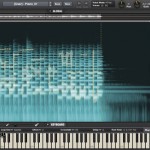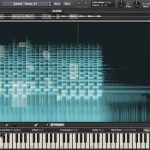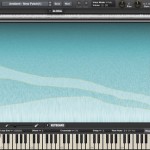Review: iZotope Iris
During the final weeks of April, I had the opportunity to sit down with iZotope’s new sampling re-synthesizer, Iris. Upon first opening it, I instantly recognized and felt comfortable with the spectral analysis view. If you’ve ever used iZotope’s RX software then you’re already familiar with the basic layout of Iris’ GUI.
Working primarily in music scored to picture, I saw something as versatile as Iris having immediate applications in my daily work. Iris is a creative sandbox that lets you quickly create/transform sounds that you’d have otherwise never imagined from the source material.
While most people’s first move might be to load up the presets and check things out, I was excited to dive right in with original sounds of my own. iZotope defines Iris as a “visual instrument”, and indeed on first glance, I was eager to try “painting” on the spectral map of a sample. Bandpass filters are one thing, but Iris lets you literally draw the frequencies you want to be passed through (or muted). This is an experience I’ve never had with a music production tool prior to Iris.
The first thing I did was pull in a stem from a recent project. It was a piano track which went through a 4 bar progression. (See figure 1)
Within Iris, I singled out a section of the audio within the progression so that it would loop evenly. Next, I engaged the Magic Wand tool (reminiscent of Adobe Photoshop) and began to experiment. What I created was something that sounded vaguely like a music box instead of a piano. Washing it out with verb and some distortion – both Iris post effects – I achieved something so far-flung from a piano sound that it was immediately inspiring.
I spent more time with this single instance of Iris; using the same piano stem I had dragged in before, I put it on another of the three available slots where you load your audio samples. There, I had the sample play backwards, and began randomly drawing boxes and circles. (See figure 2) This added a slight random quality to the overall sound that I hadn’t achieved prior.
After feeling satisfied with my first Iris patch, I decided to move on to creating some dark pads. Most of the other instances of Iris within my project featured sounds like single-violins being time-stretched, or a single vocal “aah” sample.
There’s an amazing feature within Iris called “Radius RT”, and I employed it heavily within my project. What “Radius RT” does is simply keep the playback length/speed the same no matter where you play a sample on the keyboard. Take a single note of a piano, map it somewhere low on the keyboard and then enable Radius RT. Now, all of the notes you play in the upper registers sound – though familiar like a piano – oddly eerie and ghostly. Within the context of the piece I was working up, these sounds were dramatic and only somewhat recognizable – perfect for something modern as well as a horror, suspense or futuristic film project.
I was about to begin pulling up some of my other synths to work out some transitional elements, but stopped myself and decided to see what I could come up with within Iris. It’s extremely simple to do something like create a pink-noise wash, which I did in the opening moments of my project. It’s also faster than automating a filter within your DAW. Just paint in a curve over the pink noise and you’re there. (See figure 3)
While Iris’ applications are undeniably novel and creative, I can see how its purpose and place may be a bit unclear to some users, depending on how they’re used to working. But if you’re willing, and even looking, to think just slightly outside the box, you can create unique sounds with Iris that work great as ambient layers, as well as transitional elements. If you work in film, you will immediately see applications for Iris — i.e. creating unique-sounding layers to put under a more traditional track, or idea. In short; it’s inspiring!
If you fire up Iris only to find yourself lost, iZotope has a few tutorials online to help get you started. Furthermore, there are myriad user-made tutorials to help show you the ropes and the basics. It’s difficult to instruct someone to a specific end-goal with software like this; you will find that you create something new each time you use it.
Check out Nathan’s track “Mementos”
Full track
“Track” with Iris
Iris solo’d
“Track” without Iris
My criticism of Iris seems trivial: You won’t find any step sequencers or basic synths in Iris. There’s a Sub feature that lets you generate a number of basic tones (square, saw, pink noise, etc.), which can be played alongside three samples, but this program is clearly geared towards existing-audio manipulation.
Overall, I found Iris to be more than satisfactory for a new software instrument and sound design tool – it really is inspiring as a jumping off point on a new track, or as a source of interesting layers for a track that needs that extra “ something”. I love anything that allows me to take conventional sounds and turn them into something unique, original and all my own. In film, TV and ad scoring, tools like this go a long way in helping you craft distinctive tracks.
iZotope’s Iris can be purchased as a digital download for $249; Iris+2 is available for $299 and includes Iris plus the Glass and Wood sound libraries. Click for more info.
Nathan Kil is a prolific composer and sound designer with So Loud Music in NYC. His music has been featured in ads for Full Tilt Poker, Subway, Sharp Electronics and LG among others, as well as longer-form projects and PSAs for NOLA Pictures and Razorfish. Nathan is one of 9 composers selected to write for AMP’s next Muse2Music event in Los Angeles on May 31.
Please note: When you buy products through links on this page, we may earn an affiliate commission.










